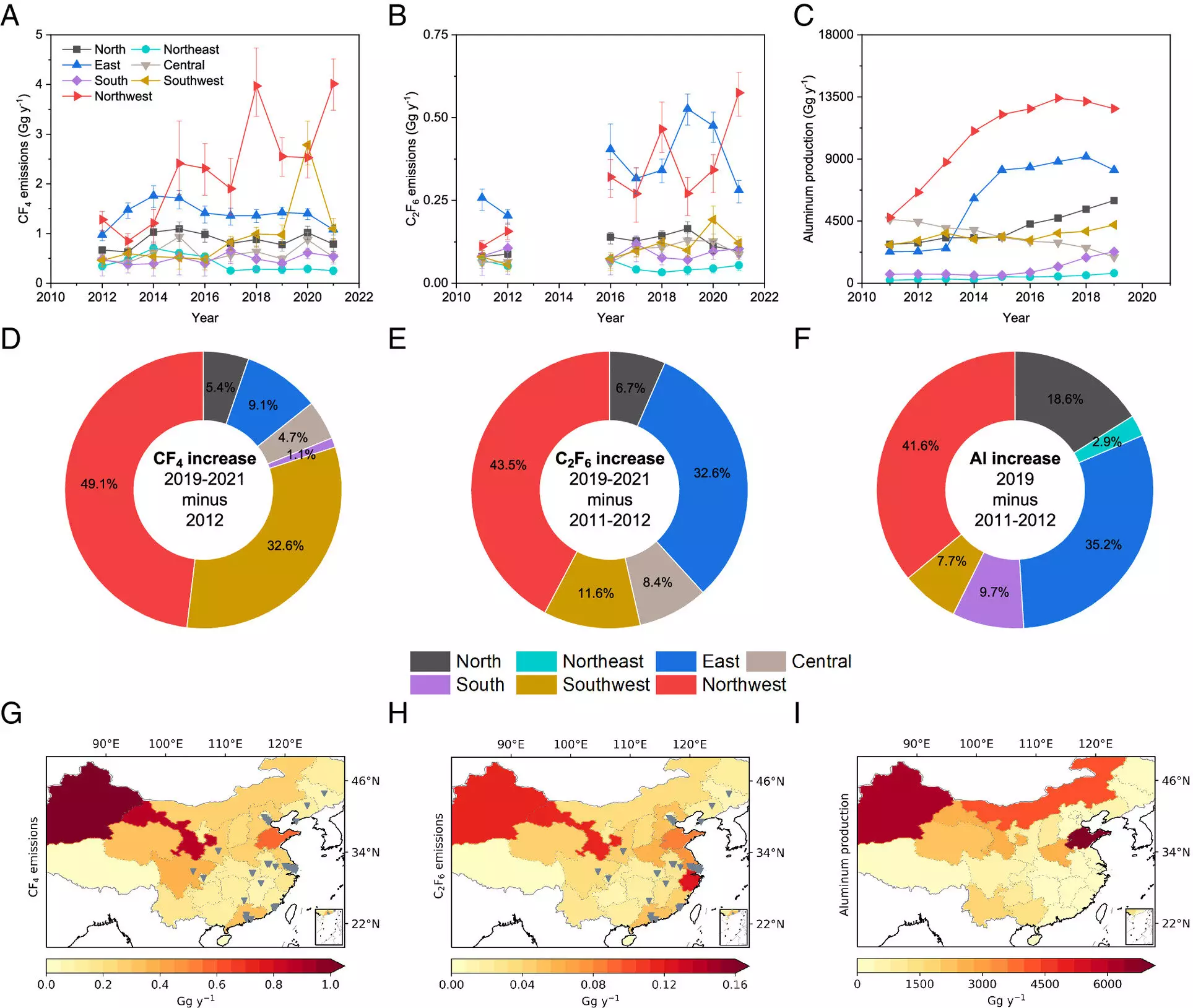Greenhouse gases are a major contributor to global warming, with varying levels of impact based on their global warming potential (GWP). Methane, for example, has a GWP 28 times greater than carbon dioxide over a 100-year period. Perfluorocarbons (PFCs), on the other hand, have GWPs thousands of times higher than CO2, making them significant contributors to climate change. Additionally, the lifespans of these gases in the atmosphere vary widely, with PFCs lasting tens of thousands of years, posing a major challenge in achieving climate change goals.
Recent studies have shown a rapid increase in Chinese emissions of three PFCs over the last decade, namely tetrafluoromethane (PFC-14), hexafluoroethane (PFC-116), and perfluorocyclobutane (PFC-318). These emissions have played a dominant role in the global increase of these gases, with Chinese emissions accounting for a significant portion of the rise. The sources of these emissions vary, with the aluminum industry and semiconductor industry being key contributors in different regions of China.
The studies used atmospheric observations to pinpoint the sources of PFC emissions in China. By analyzing the data, researchers were able to identify specific industries, such as aluminum smelting and semiconductor production, as major sources of PFC emissions. These gases are often byproducts of industrial processes, highlighting the need for targeted mitigation strategies in these sectors.
The findings of these studies have important implications for global climate change mitigation efforts. PFCs are largely produced as byproducts in the manufacturing of common industrial products, making them potentially avoidable with targeted interventions. Phasing out emissions of PFCs through recycling programs and technological improvements in key industries could have a significant impact on reducing greenhouse gas levels and achieving climate targets.
The rise in Chinese emissions of PFCs highlights the need for targeted action to mitigate the impact of these potent greenhouse gases on global warming. By identifying the sources of these emissions and implementing strategies to reduce them, there is potential for significant progress in addressing climate change. Collaboration between industries, governments, and research institutions will be crucial in achieving these goals and ensuring a sustainable future for our planet.


Leave a Reply